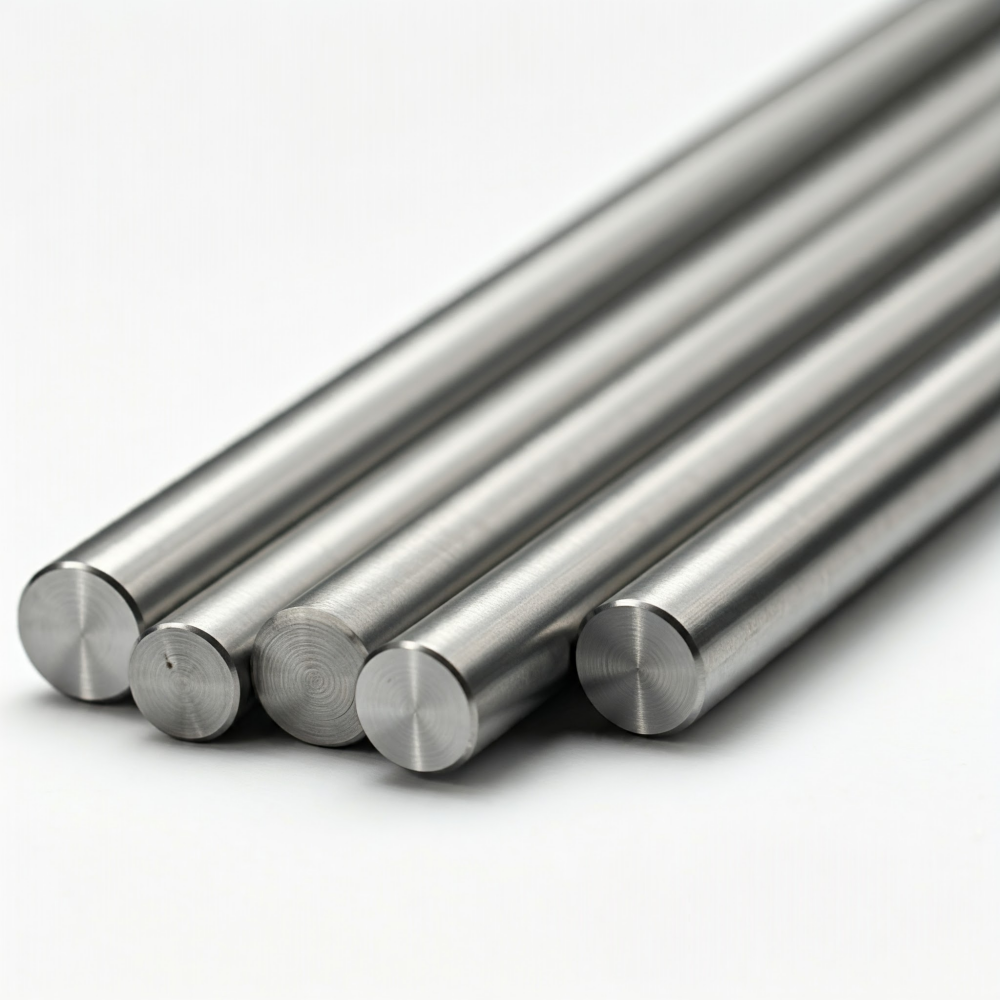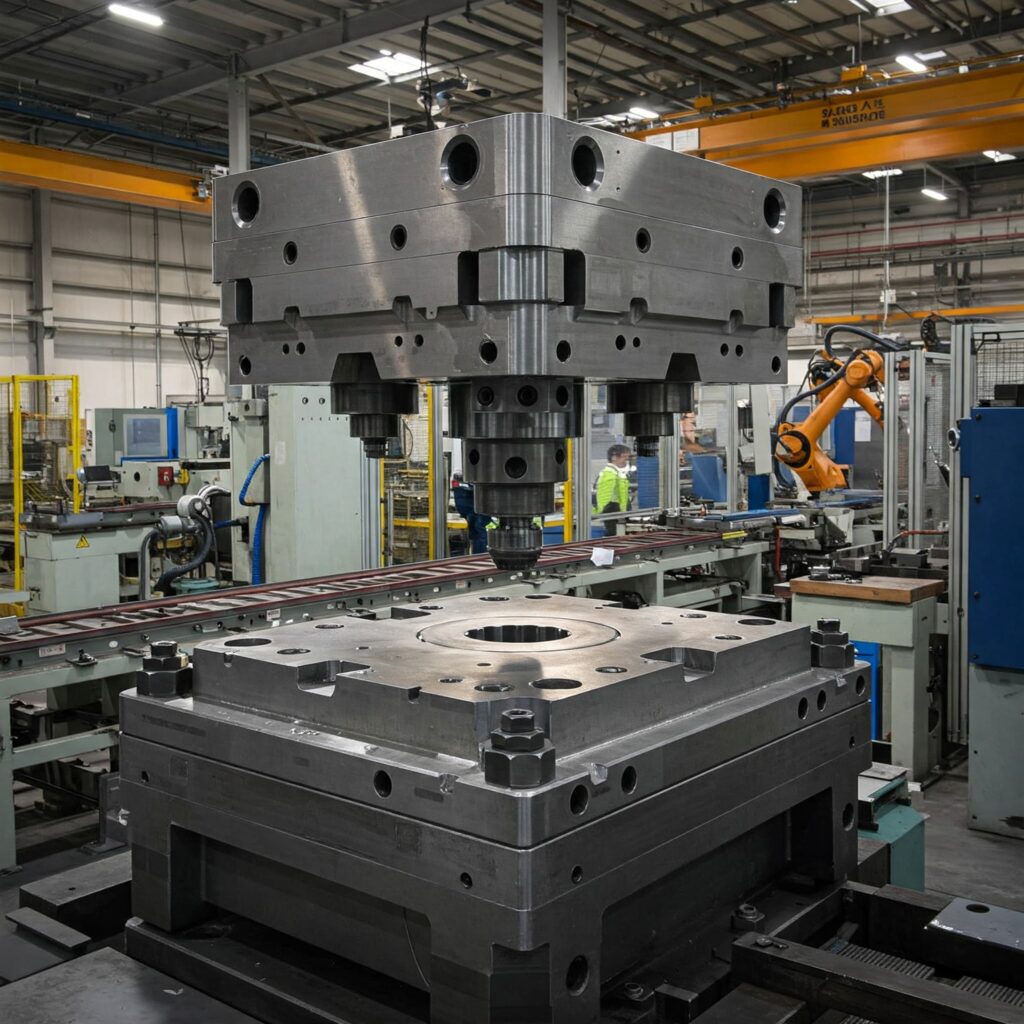Introduction
D2 tool steel is a prominent high-carbon, high-chromium cold-work tool steel, widely recognized for its excellent wear resistance and dimensional stability. It is a standard against which other tool steels are often measured for abrasion resistance. D2 steel is primarily applied in long-run cold-work tooling such as blanking, cold forming, drawing, lamination, and thread rolling dies, as well as for various punches, rolls, and shear/slitter knives, leveraging its excellent wear resistance and dimensional stability. Why is Chemical Composition Crucial for D2 steel? The D2 steel composition directly influences physical and mechanical properties.
The D2 Steel Composition1
| Carbon (C) | Chromium (Cr) | Molybdenum (Mo) | Vanadium (V) | Manganese (Mn) | Silicon (Si) | Phosphorus (P) | Sulfur (S) |
| 1.40 – 1.60 | 11.00 – 13.00 | 0.70 – 1.20 | 0.50 – 1.10 | 0.10 – 0.60 | 0.10 – 0.60 | ≤ 0.030 | ≤ 0.030 |
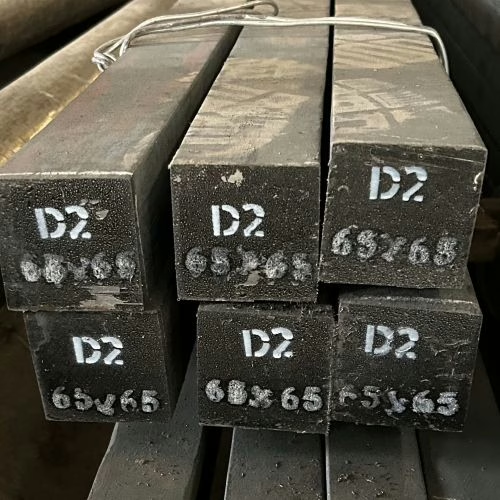
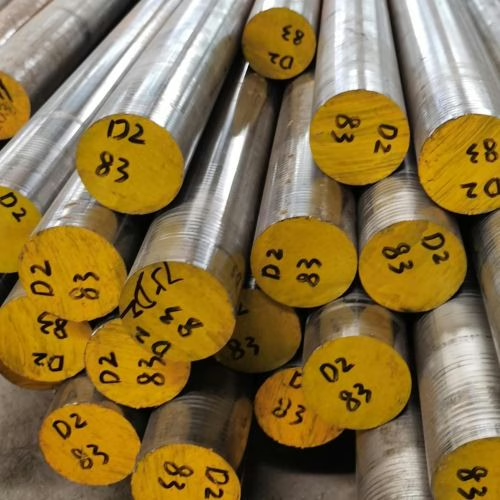
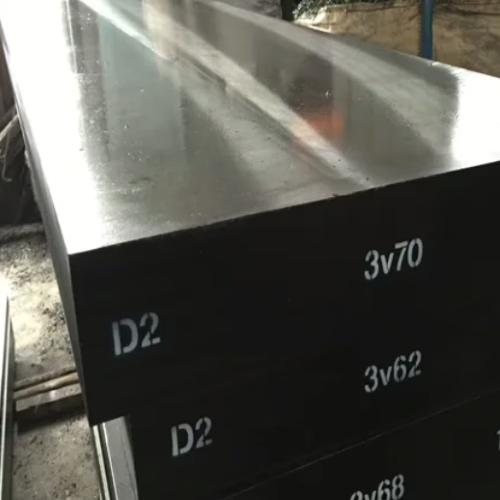
Alloying Elements and Their Roles in D2 Steel
- Carbon (C). It is the main hardening element in steel, enabling D2 steel to form martensite during heat treatment. Increasing the carbon content enhances hardness and wear resistance but may compromise toughness and ductility. In D2 steel, carbon and other alloys form high-hardness, high-wear-resistant cemented carbides. However, the high carbon content also results in poor weldability of D2 steel.
- Chromium (Cr). The high carbon and high chromium content in D2 steel produce a large amount of chromium-enriched carbides with high wear resistance, such as Cr7C3 or Cr23C6, which have a higher hardness than ordinary cementite. It also improves hardenability, corrosion resistance, oxidation resistance, polishability, and high-temperature properties.
- Molybdenum (Mo). It is a strong carbide former, forming hard and stable carbides like Mo₂C and double carbides such as Fe₄Mo₂C and Fe₂₁MoC₆. It improves hardenability, wear resistance, and the strength of steel at elevated temperatures (red hardness). Molybdenum also aids in enhancing machinability and mechanical properties in chromium steels and case-hardening in nickel-molybdenum steels.
- Vanadium (V). It is an extremely strong carbide former, forming very stable and hard carbides (VC) and carbonitrides (vanadium carbonitride). These carbides contribute to increased wear resistance and strength while refining the grain structure and increasing toughness at high temperatures.
- Manganese (Mn). It contributes to hardness depth and is also a solid solution strengthener. Acts as a deoxidizer and enhances hardenability.
- Silicon (Si). It is present in smaller amounts compared to manganese and contributes to the overall strength and hardness.
- Phosphorus (P) and Sulfur (S). They are detrimental to the performance of D2 steel, and their content should be controlled to less than 0.030%. Sulfur, in particular, can cause severe segregation and “red shortness.”
Impact of Composition on D2 Steel’s Properties
- High Hardness and Wear Resistance. The high content of carbon, chromium, molybdenum, and vanadium contributes to the formation of numerous, large, chromium-rich alloy carbides within the steel’s microstructure. These carbides are primarily responsible for D2’s outstanding resistance to abrasive and adhesive wear, allowing it to maintain a sharp edge for extended periods.
- Moderate Corrosion Resistance. The 12% chromium content gives D2 a certain degree of corrosion resistance, but this is not its most important property, as its corrosion resistance is far inferior to that of true stainless steel.
- Poor Machinability and Weldability. The high carbon and chromium content give D2 steel excellent hardness and wear resistance, but also make it difficult to machine and weld.
- Dimensional Stability. D2 steel can be air-hardened, minimizing the risk of deformation. This is related to the molybdenum (Mo) in its composition.
Equivalent Grades of D2 Steel
- USA: AISI D2, ASTM A681, UNS T30402
- Germany: DIN 1.2379, X153CrMoV12, X155CrVMo12-1
- Japan: JIS SKD11
- UK: BD2
- France: Z160CDV12
- Russia: Ch12D1
- Spain: F5211
- China: GB Cr12Mo1V1(Some sources indicate Cr12MoV)
- EU: EN X153CrMoV12
Conclusion
D2 steel is a very mature steel that has been on the market for decades. The D2 steel sold by our company can be fine-tuned for Molybdenum (Mo) and Vanadium (V) to meet the market standards of different countries. If readers are interested in D2 steel, please feel free to contact us.
- Roberts, G., Krauss, G., & Kennedy, R. (1998). Tool Steels: 5th Edition (p. 203). ASM International. ↩︎
FAQ
D2 tool steel is not considered a true stainless steel, although it contains a high percentage of chromium (around 11.50% to 12.05%), which is near the minimum for stainless designation.
D2 tool steel achieves its exceptional hardness through its high carbon and chromium content, combined with specific heat treatment processes. During heat treatment, its microstructure transforms to hard martensite, and it forms a large volume of extremely hard alloy carbides. These carbides, primarily M7C3 type rich in chromium, act as highly wear-resistant particles embedded within the hard martensitic matrix, contributing significantly to the overall hardness of the steel, typically ranging from 54 to 65 HRC.
D2 tool steel is difficult to machine primarily due to its high hardness and the presence of a large volume of hard, undissolved carbides within its microstructure. These carbides act as hard obstacles during machining, causing significant abrasive wear on cutting tools. Its high carbon and chromium content, which contribute to its wear resistance, also reduce its machinability.
Carbides are essential to the performance of D2 tool steel, predominantly providing its extremely high wear and abrasion resistance. D2 contains “massive amounts of carbides,” primarily chromium-rich M7C3 types, which are formed during solidification and heat treatment from its high carbon and chromium content. These hard, stable carbide particles act as microscopic “teeth of a saw” within the steel’s matrix, preventing material removal under abrasive conditions. While they significantly increase wear resistance, a high volume of carbides can also reduce the steel’s toughness.
D2 tool steel is generally more expensive than plain carbon or low-alloy steels due to its higher alloy content. However, within the class of high-performance cold-work tool steels, D2 is often considered to offer a good balance of properties and cost. Its cost-effectiveness is enhanced by its excellent wear resistance, leading to longer tool life despite the higher initial material price.
Need High-Performance D2 Tool Steel?
Leverage Aobo Steel’s 20+ years of forging expertise. We provide top-grade D2 tool steel, ensuring exceptional durability, wear resistance, and precision for all your demanding applications. Partner with us for quality you can trust.
Ready to elevate your project? Simply fill out the form below to connect with our D2 steel specialists and receive your personalized quote!

